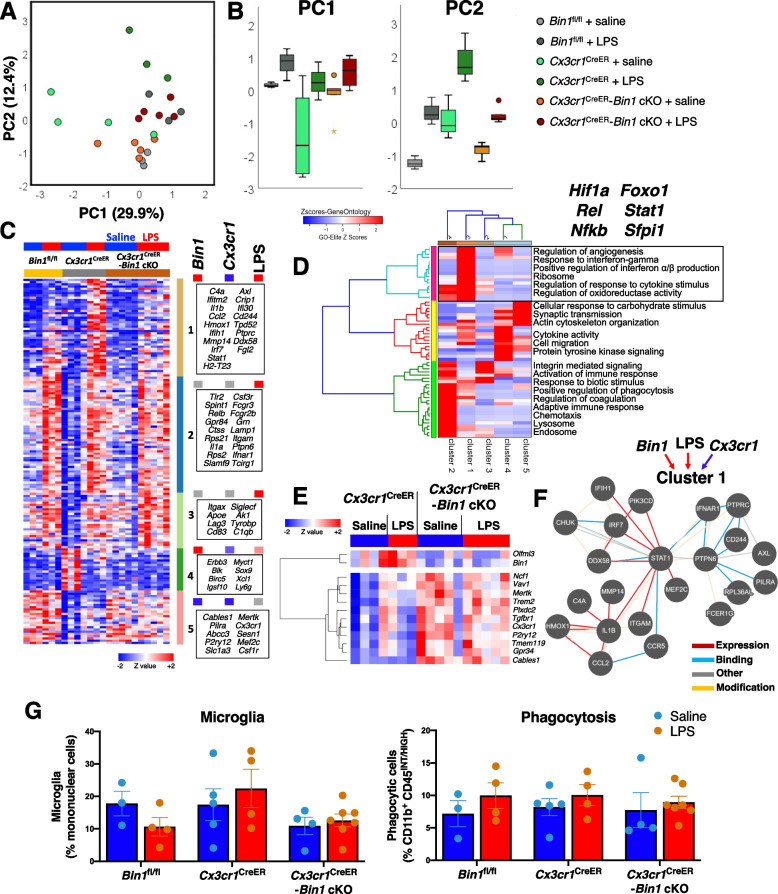Fig. 6.
In vivo microglia-specific loss of Bin1 dampens the proinflammatory microglial response. A PCA of gene expression data from FACS-purified mouse brain microglia from in vivo Bin1 cKO studies identified two PCs which accounted for 42% of the variance in the data. B PC1 (effect of LPS regardless of genotype) explained 29.9% of the variance, whilst PC2 (LPS effect impacted by genotype) explained 12.4% of the variance and exemplified the pattern of Bin1 cKO mitigating dysregulation by Cx3cr1 haploinsufficiency. C K-means clustering identified five clusters of genes affected in our dataset. Cluster 1 genes were upregulated during LPS stimulation, dependant on BIN1. Cluster 2 was upregulated by LPS stimulation and positively regulated by BIN1 (downregulated by Bin1 cKO). Cluster 3 was upregulated by LPS independent of BIN1. Cluster 4 was downregulated by LPS and positively regulated by BIN1 in unstimulated conditions. Cluster 5 genes were negatively regulated by BIN1, counter to CX3CR1. D Gene ontology enrichment analysis identified interferon-response pathways regulated by cluster 1 genes. E Thirteen microglial genes were suppressed by BIN1 (upregulated by Bin1 cKO) independent of LPS inflammation, including homeostatic genes P2ry12, Tmem119, and Tgfbr1. F Pathway analysis suggests STAT1 signaling may regulate expression of cluster 1 genes (nature of the interaction between genes is shown based on color scheme shown in the key.) G Analysis of microglia numbers found no main effects for genotype (F2,21 = 2.614, p = 0.097), LPS treatment (F1,21 = 0.002, p = 0.966), or no genotype*LPS interaction (F2,21 = 1.192, p = 0.323) (by two-way ANOVA). Phagocytic capacity was not affected by LPS (F1,21 = 1.939, p = 0.178) or genotype (F2,21 = 0.121, p = 0.887) in Bin1 cKO studies, and no genotype*LPS interactions was found (F2,21 = 0.101, p = 0.904) (by two-way ANOVA). Data plotted as mean ± SEM. For associated physiological data and immunohistochemistry data, see Fig. S5B-F

